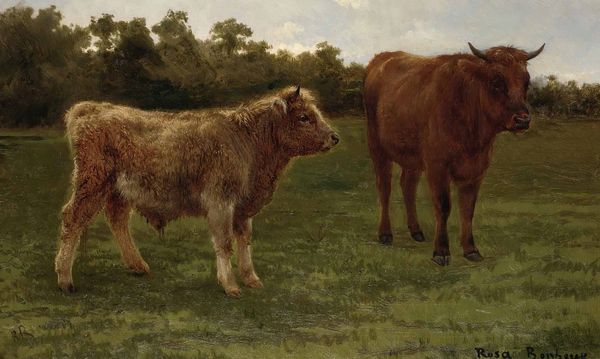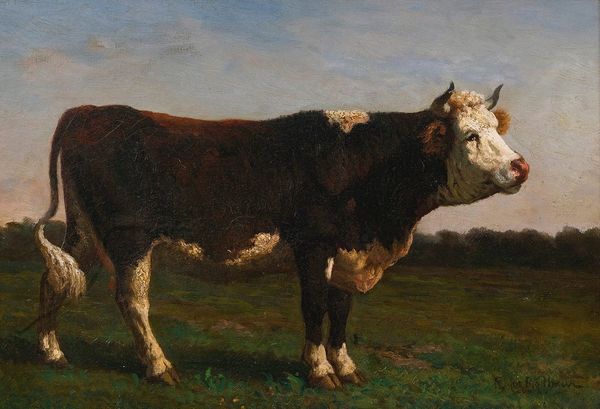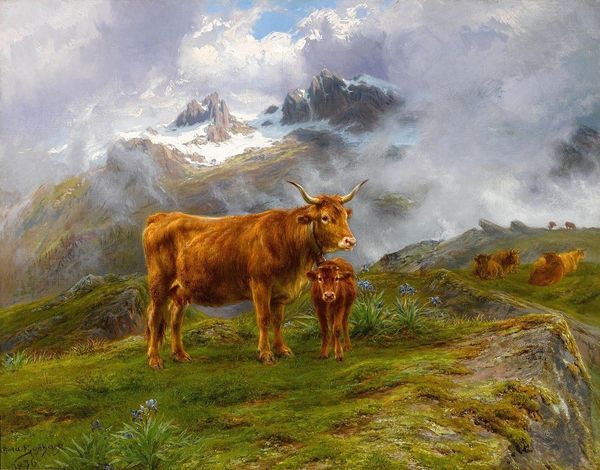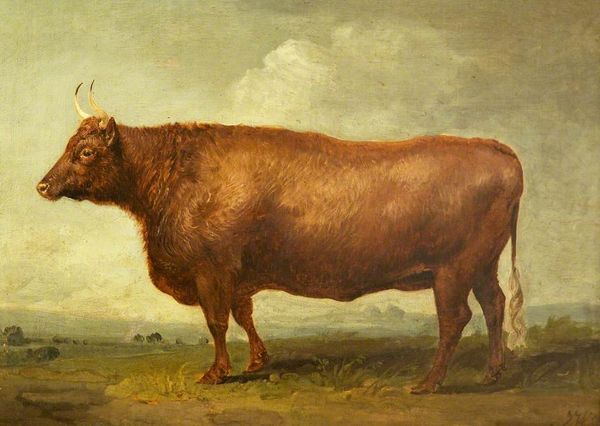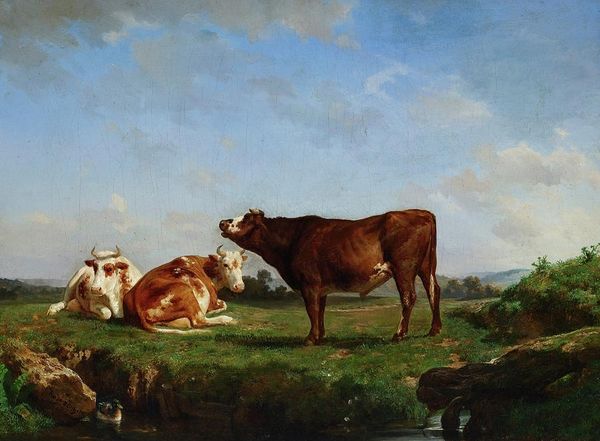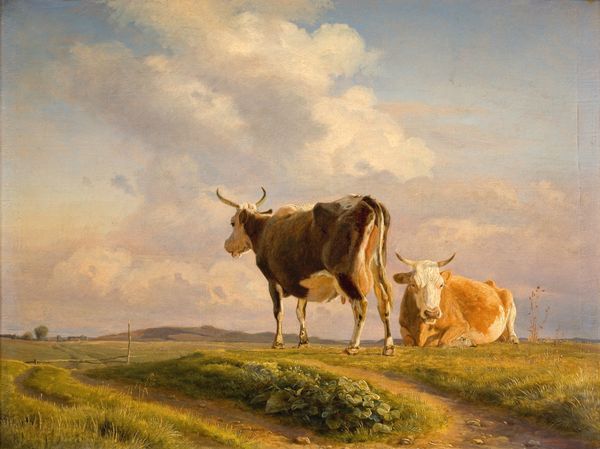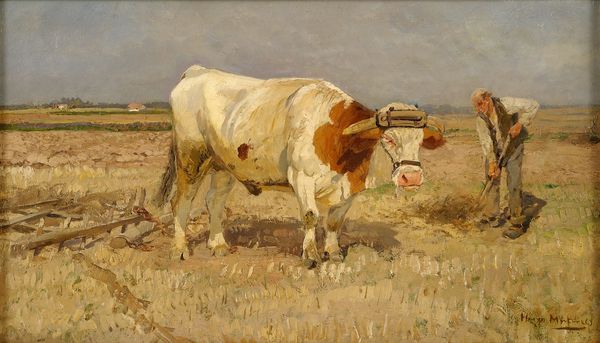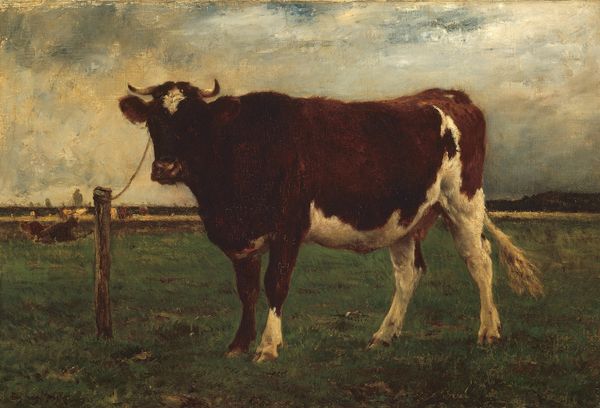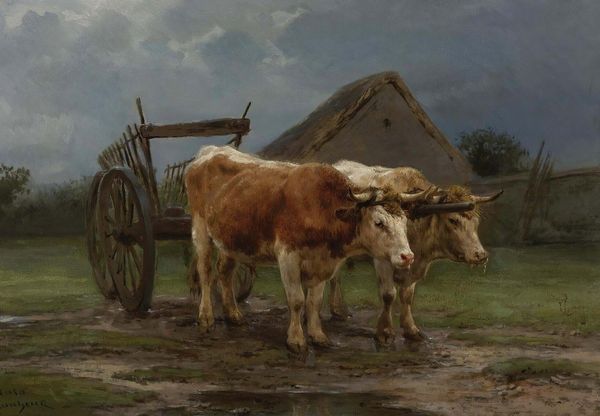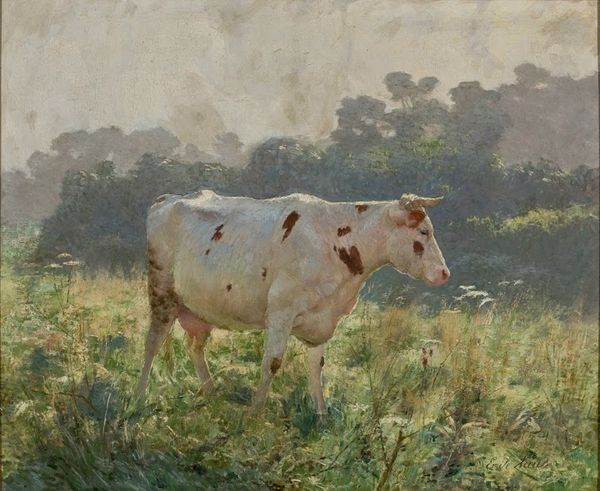
painting, oil-paint
#
animal
#
painting
#
oil-paint
#
landscape
#
nature
#
oil painting
#
animal portrait
#
naturalistic tone
#
animal drawing portrait
#
genre-painting
#
realism
Copyright: Public domain
Editor: Rosa Bonheur's "Longhorn Bull in a Landscape," painted in 1896. It's oil on canvas, and the sheer size of the bull really dominates the composition, almost pressing against the picture plane. What aspects of the materials and their use strike you most? Curator: The focus on the animal and its physical presence through the oil paint begs questions about the industrial context. What role did animal labor play at this time, and how might this painting be seen as both a celebration and an objectification of that labor? Think about Bonheur's choice of subject matter, and how it relates to broader issues of agricultural production. Editor: So you're suggesting it's less about the artistic skill and more about what the bull *represents* in terms of labor and industry? Curator: Not *less* about skill. I'm asking how skill, technique, and material choices reflect Bonheur’s engagement with the 19th century's social landscape. The texture of the fur, rendered with such detail through layers of oil paint, feels inherently tied to the material reality of cattle farming. Who benefits from the labor performed by this creature, and how is that relationship implicated in the painting? Editor: I see what you mean. It almost feels like she’s making the invisible, visible, like a statement on where our food comes from. It's about more than just portraying a bull. Curator: Exactly! How does considering the socioeconomic context enhance your understanding of the artwork? Editor: It makes me appreciate how something that seems like a straightforward animal portrait is really embedded in this web of production and consumption. I’ll never look at another animal painting the same way. Curator: Nor will I. The dialogue helps see artworks beyond just their aesthetic.
Comments
No comments
Be the first to comment and join the conversation on the ultimate creative platform.
